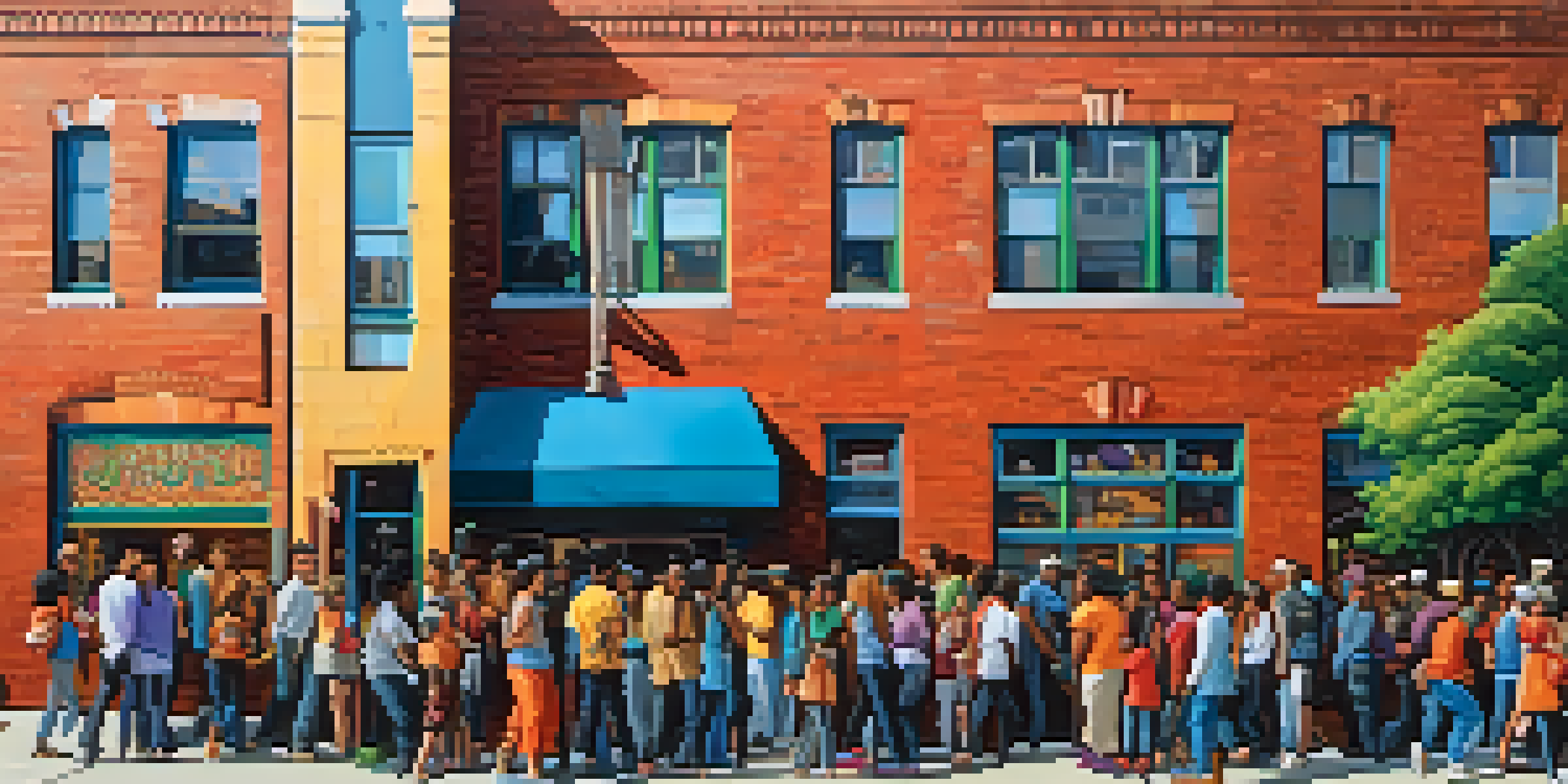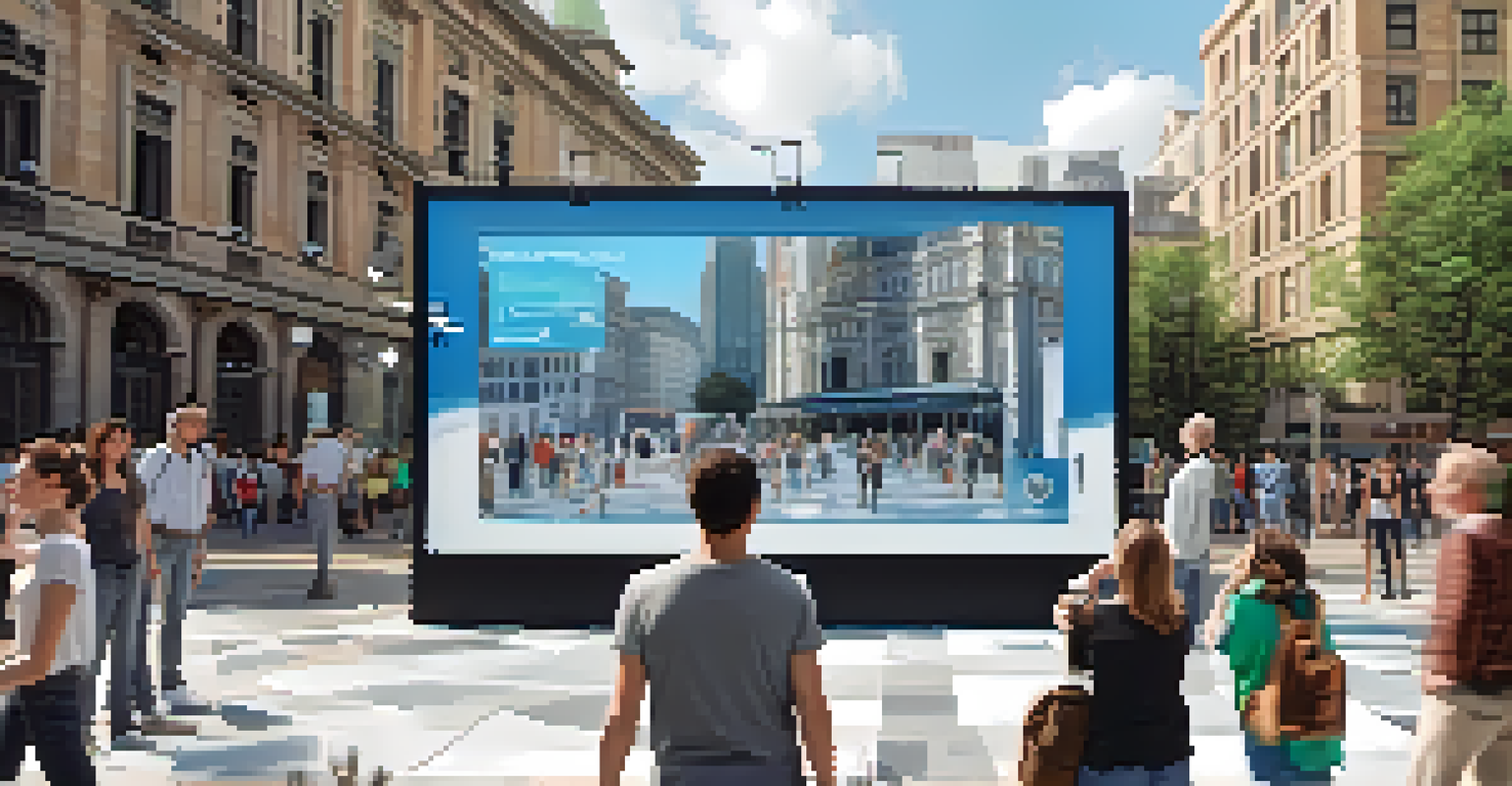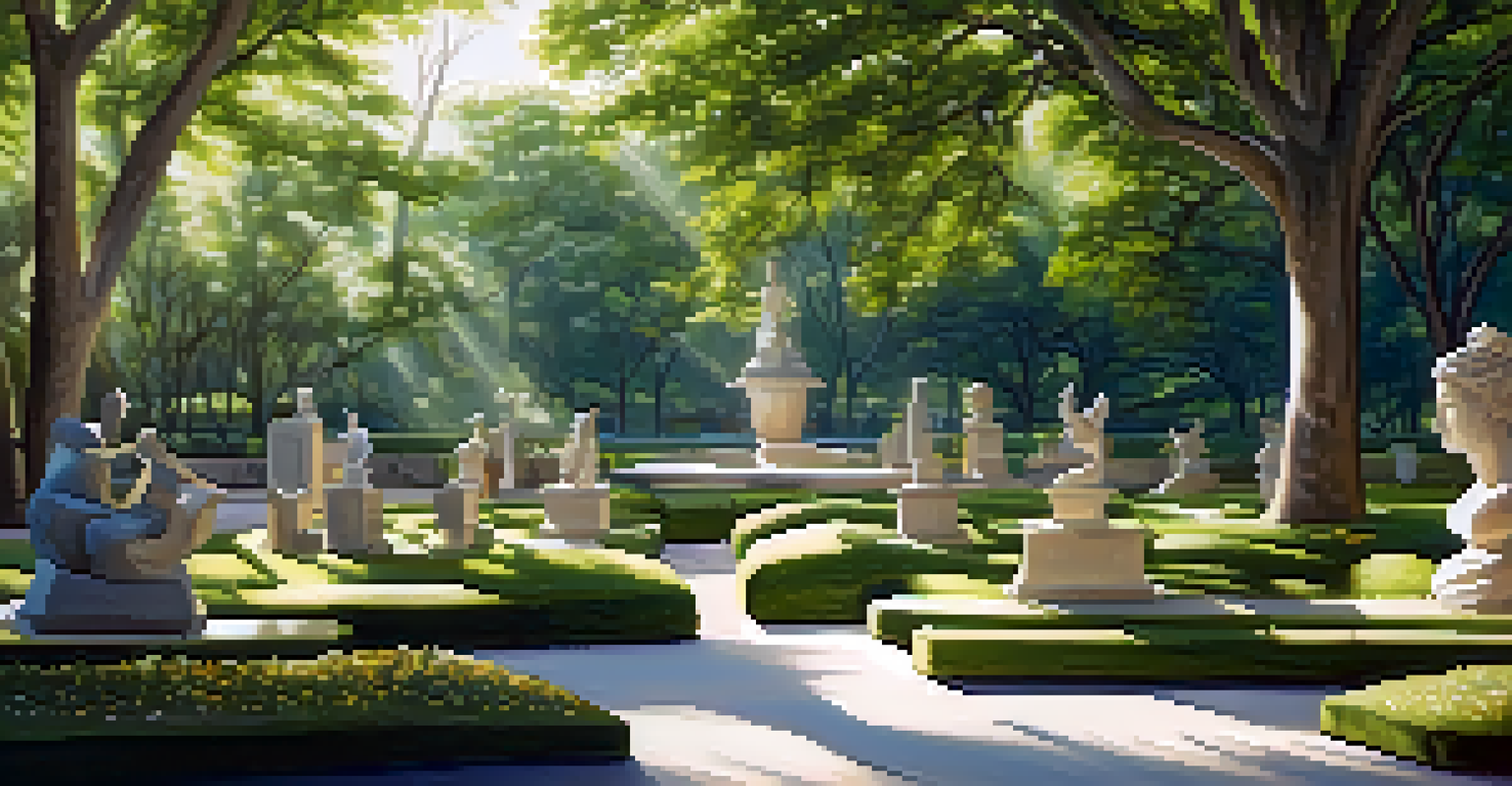Public Art Policies: Governing Creative Expression in Cities

Understanding Public Art and Its Importance in Urban Spaces
Public art refers to artworks that are accessible to the general public, often displayed in parks, streets, and buildings. These pieces can take many forms, including sculptures, murals, and installations, and they play a crucial role in enhancing the cultural landscape of cities. By engaging the community and encouraging dialogue, public art transforms ordinary spaces into vibrant areas that reflect local identity and creativity.
Public art is an integral part of our community, providing a voice for the people and a platform for dialogue.
The importance of public art extends beyond aesthetics; it fosters a sense of belonging and pride within communities. For instance, a simple mural can tell the story of a neighborhood's history, celebrating its diversity and heritage. Moreover, public art can stimulate economic growth by attracting tourists and encouraging local businesses to thrive.
As cities continue to evolve, the role of public art becomes more significant, prompting the need for clear policies that govern its creation and display. These policies help ensure that public art reflects the values of the community while balancing creativity with urban planning.
The Role of Public Art Policies in Urban Development
Public art policies serve as a framework within which artists, communities, and city officials can collaborate. They help define what types of art are appropriate for public spaces, ensuring that artistic expression aligns with community standards and values. These policies also establish guidelines for funding, selection processes, and maintenance of public artworks, creating a sustainable environment for creativity.

For example, some cities have implemented percent-for-art policies, which allocate a portion of capital improvement budgets for public art projects. This not only provides financial support for artists but also integrates art into the fabric of urban development. Such initiatives encourage artists to think creatively and innovatively while enhancing public spaces.
Public Art Enhances Community Identity
Public art fosters a sense of belonging and pride, reflecting local history and diversity.
However, the challenge lies in balancing artistic freedom with community interests. Public art policies must be adaptable, allowing for diverse artistic expressions while maintaining a respectful dialogue with the public they serve.
Challenges Faced by Cities in Governing Public Art
Cities often face various challenges when it comes to governing public art, such as managing differing opinions on what constitutes acceptable art. Some residents may embrace bold, contemporary pieces, while others might prefer more traditional, familiar forms. These conflicting views can lead to heated debates and controversies, making it difficult for city officials to navigate public sentiment.
Art is not what you see, but what you make others see.
Moreover, funding constraints can limit the scope of public art initiatives. Many cities struggle to allocate sufficient resources for public art projects, leading to a reliance on grants or private donations. This reliance can create disparities in the types of art that are produced, as not all artists have equal access to funding opportunities.
Ultimately, finding a balance between artistic expression and community approval is crucial. Cities must engage in open dialogues with residents to ensure that public art reflects the diverse perspectives within the community.
The Impact of Technology on Public Art Policies
Technology has revolutionized the way art is created, displayed, and experienced, influencing public art policies in significant ways. Digital art installations, augmented reality experiences, and interactive displays are becoming increasingly popular, prompting cities to adapt their policies to accommodate these innovative forms of expression. This shift requires a rethinking of traditional definitions of public art.
For instance, cities might need to establish guidelines for temporary digital art displays or consider how to protect digital works from vandalism or unauthorized reproduction. Additionally, the use of social media can amplify the reach of public art, allowing artists to engage with broader audiences and gather feedback in real-time. This creates new opportunities for collaboration and community involvement.
Policies Shape Public Art Development
Clear public art policies facilitate collaboration among artists, communities, and officials, ensuring art aligns with community values.
As technology continues to evolve, public art policies must remain flexible and forward-thinking. Embracing these advancements can enhance the artistic landscape of cities while also addressing the challenges they bring.
Community Engagement: A Key Aspect of Public Art Policy
Engaging the community is essential for the success of public art initiatives, as it fosters a sense of ownership and pride among residents. Effective public art policies encourage community participation in the selection and creation process, allowing diverse voices to shape the artistic narrative of their environment. This inclusivity strengthens the bond between artists and the communities they serve.
For example, some cities hold workshops and public forums to gather input from residents about desired themes and styles for upcoming art projects. This collaborative approach not only ensures that the art reflects the community's values but also creates opportunities for local artists to showcase their talent. It’s a win-win situation that enriches the cultural fabric of the city.
Ultimately, public art policies that prioritize community engagement can lead to more meaningful and impactful artworks, resulting in a vibrant urban landscape that resonates with its inhabitants.
Case Studies: Successful Public Art Policies in Action
Several cities have successfully implemented public art policies that offer valuable insights for others looking to enhance their creative landscapes. For instance, Philadelphia's Mural Arts Program has transformed over 4,000 blank walls into stunning murals, engaging local communities and artists in the process. This program not only beautifies the city but also serves as a platform for social change and community dialogue.
Similarly, the city of San Francisco has embraced public art through its 'Art in Public Places' program, which promotes a diverse range of artistic expressions while ensuring that community involvement is at the forefront. By creating opportunities for artists to collaborate with residents, San Francisco has cultivated a rich tapestry of public art that reflects the city's unique character.
Community Engagement Drives Success
Involving residents in the public art process creates meaningful works that resonate with the community.
These case studies illustrate how well-crafted public art policies can lead to vibrant, engaging urban environments. By learning from these successful examples, other cities can develop strategies that foster creativity and strengthen community ties.
The Future of Public Art Policies: Trends and Innovations
As cities continue to grow and evolve, the future of public art policies is likely to be shaped by emerging trends and innovations. One significant trend is the increasing focus on sustainability and environmental awareness, prompting cities to consider eco-friendly materials and practices in public art projects. This shift reflects a growing recognition of the role that art can play in promoting environmental stewardship.
Additionally, there is a rising interest in incorporating public art into urban planning, ensuring that artistic elements are integrated into the design of public spaces from the outset. This approach can enhance the aesthetic appeal of urban environments while also fostering community engagement and pride.

Looking ahead, public art policies will need to remain adaptable and responsive to the changing needs and desires of communities. By embracing innovation and prioritizing collaboration, cities can create vibrant, inclusive public art landscapes that enrich the lives of their residents.